Abstract
We used a membrane filter contact technique to pick up and grow bacteria from artificially contaminated surfaces. We were able to recover individual colony-forming units (CFU) of Staphylococcus aureus from a moist agar surface more efficiently with 3- and 5- micron membrane filters than with Rodac plates, velvet pads, velveteen pads, or smaller-pore membrane filters. The effective transfer of bacteria with the 3- and 5-micron membrane filters was 0.96 +/- 0.04 (standard error of the mean) and 0.99 +/- 0.04, respectively, as compared to 0.49 +/- 0.03 for Rodac plates, 0.09 +/- 0.01 velvet pad imprints, 0.05 +/- 0.01 for velveteen pad imprints, 0.27 +/- 0.02 for velvet pad rinses, 0.005 +/- 0.001 for velveteen pad rinses, 0.39 +/- 0.02 for 0.45-micron filters, and 0.85 +/-0.05 for 1.2 micron filters. In addition, the recovery of S. aureus from contaminated bovine muscle surfaces with the 5-microns membrane filter was similar to that of quantitative dilutions of biopsy material and was significantly higher than the recovery from Rodac plates. The 5-microns membrane filters on a paddle recovered 52 +/- 5 CFU/cm2 from artificially contaminated bovine skeletal muscle, the quantitative dilutions of biopsy recovered 69 +/- 5 CFU/cm2, and the Rodac plate recovered 5 +/- 3 CFU/cm2. Sampling of moist surfaces by the membrane filter contact technique is easy to perform and highly efficient; our data suggest that it could be employed for cultures of clinical surfaces such as surgical wounds or burns.
Full text
PDF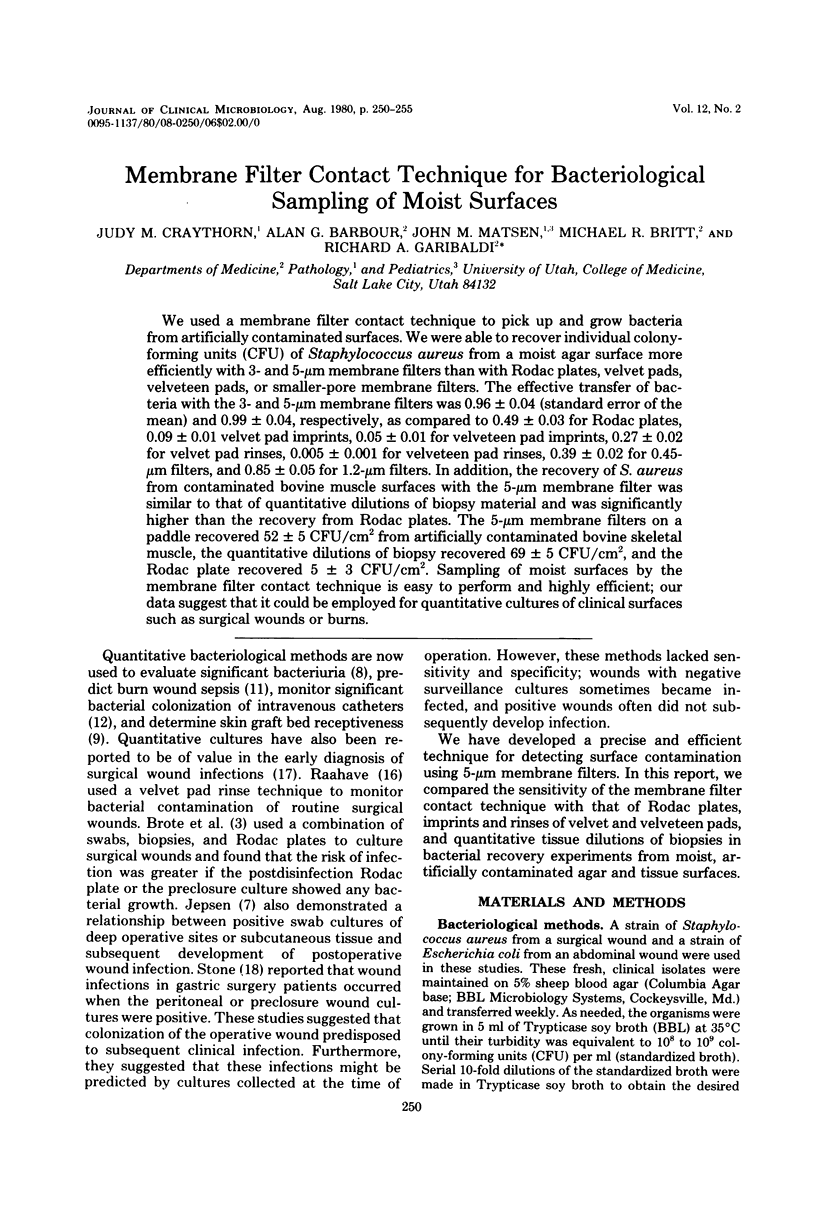
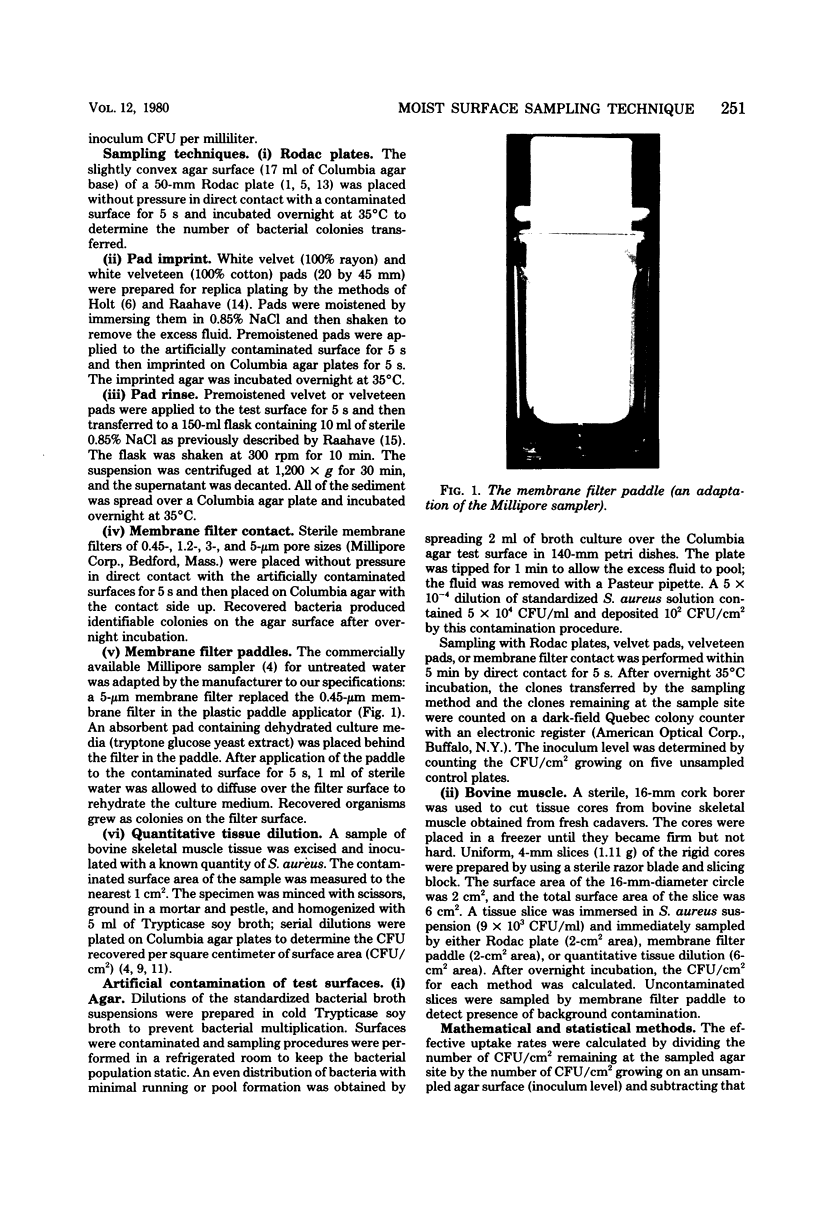
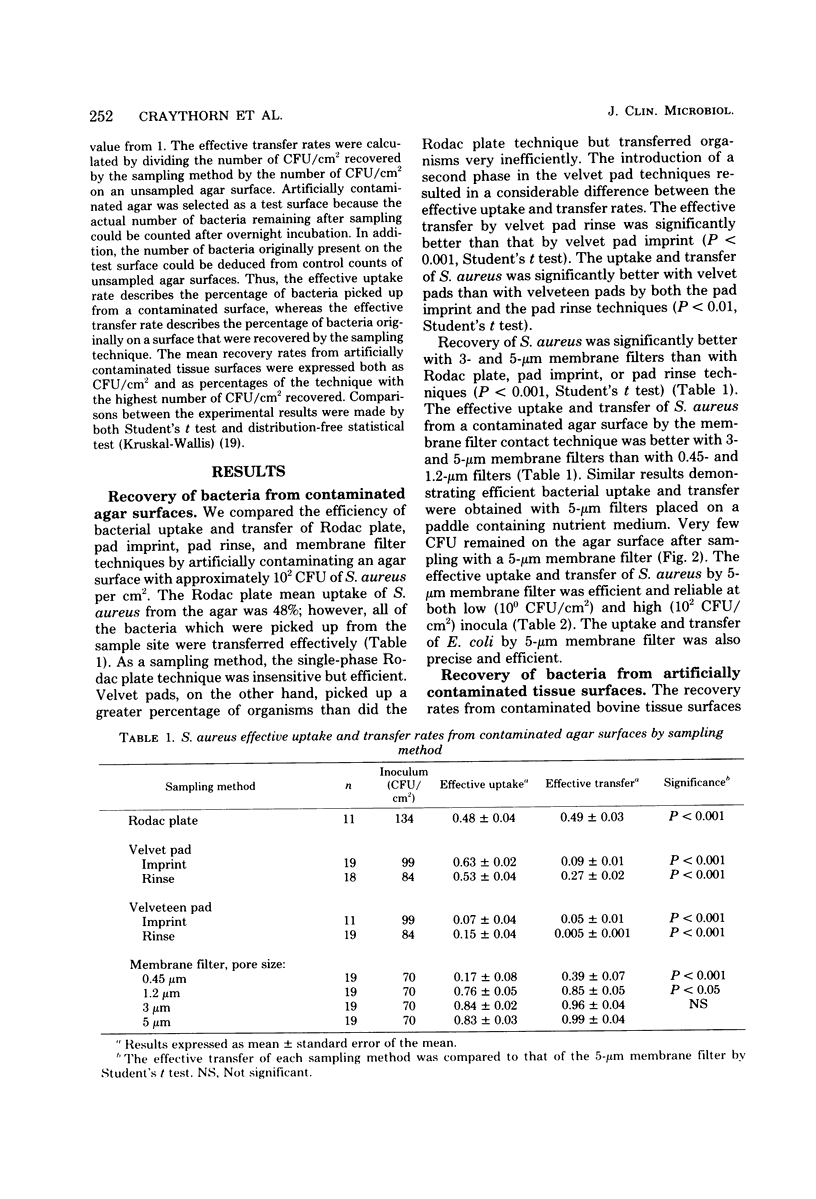
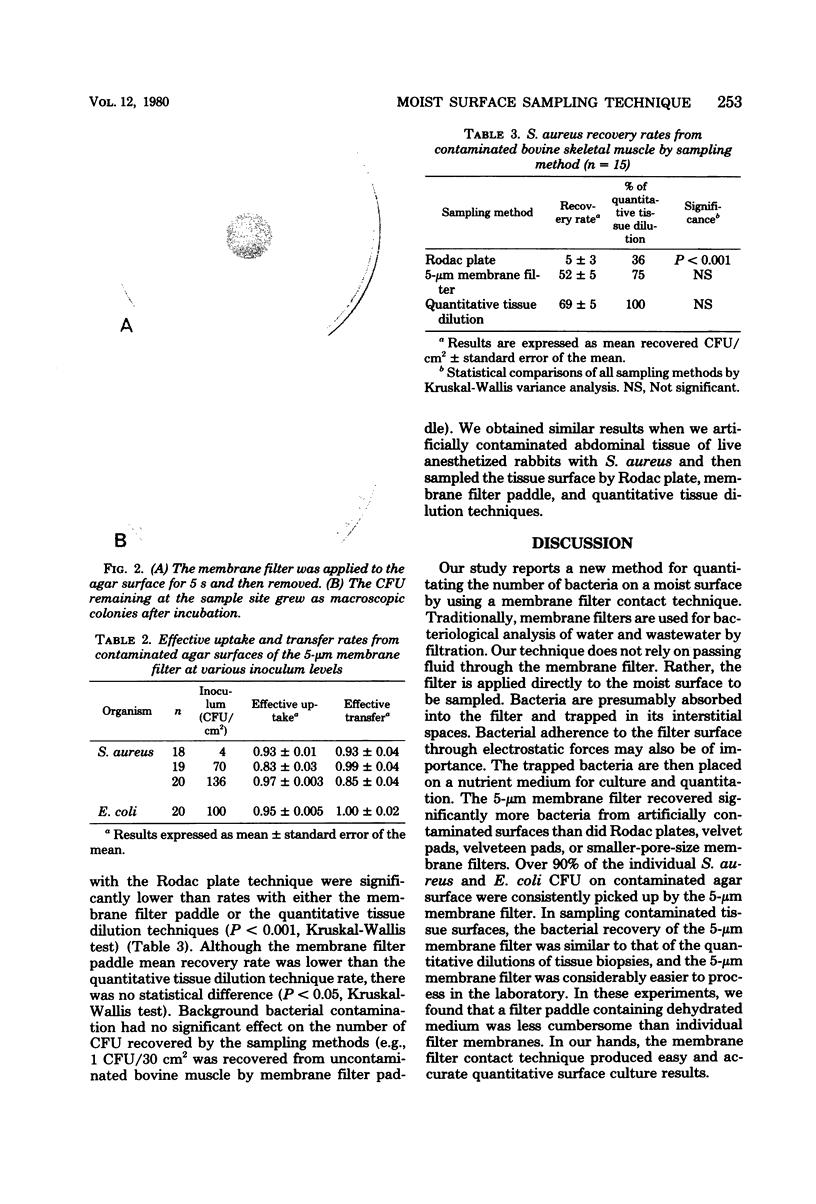

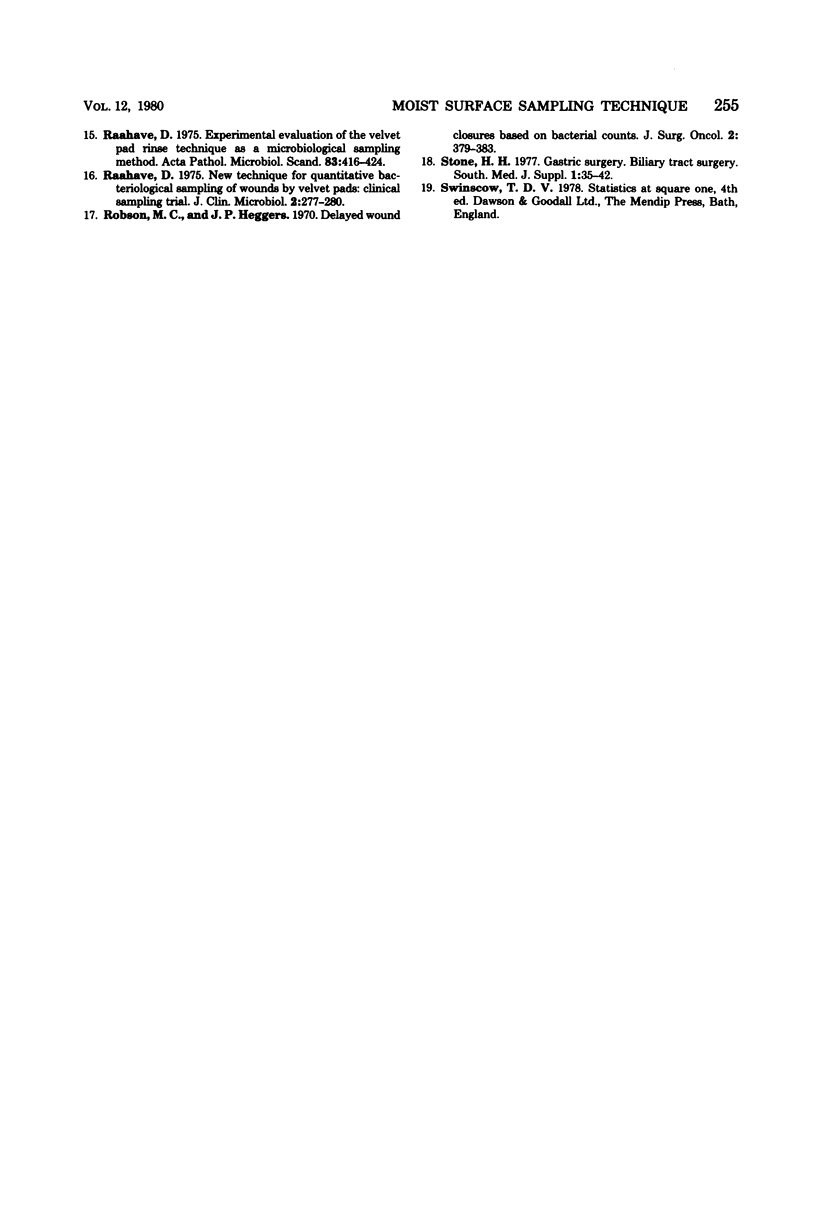
Images in this article
Selected References
These references are in PubMed. This may not be the complete list of references from this article.
- Aglietti P., Salvati E. A., Wilson P. D., Jr, Kutner L. J. Effect of a surgical horizontal unidirectional filtered air flow unit on wound bacterial contamination and wound healing. Clin Orthop Relat Res. 1974 Jun;(101):99–104. [PubMed] [Google Scholar]
- Angelotti R., Wilson J. L., Litsky W., Walter W. G. Comparative evaluation of the cotton swab and Rodac methods for the recovery of Bacillus subtilis spore contamination from stainless steel surfaces. Health Lab Sci. 1964 Oct;1(4):289–296. [PubMed] [Google Scholar]
- Bröte L., Gillquist J., Tärnvik A. Wound infections in general surgery. Wound contamination, rates of infection and some consequences. Acta Chir Scand. 1976;142(2):99–106. [PubMed] [Google Scholar]
- HALL L. B., HARTNETT M. J. MEASUREMENT OF THE BACTERIAL CONTAMINATION ON SURFACES IN HOSPITALS. Public Health Rep. 1964 Nov;79:1021–1024. [PMC free article] [PubMed] [Google Scholar]
- Holt R. J. Pad culture studies on skin surfaces. J Appl Bacteriol. 1966 Dec;29(3):625–630. doi: 10.1111/j.1365-2672.1966.tb03516.x. [DOI] [PubMed] [Google Scholar]
- Jepsen O. B. Contamination of the wound during operation and postoperative wound infection. Ann Surg. 1973 Feb;177(2):178–180. doi: 10.1097/00000658-197302000-00009. [DOI] [PMC free article] [PubMed] [Google Scholar]
- KASS E. H. Bacteriuria and the diagnosis of infections of the urinary tract; with observations on the use of methionine as a urinary antiseptic. AMA Arch Intern Med. 1957 Nov;100(5):709–714. doi: 10.1001/archinte.1957.00260110025004. [DOI] [PubMed] [Google Scholar]
- Krizek T. J., Robson M. C. Evolution of quantitative bacteriology in wound management. Am J Surg. 1975 Nov;130(5):579–584. doi: 10.1016/0002-9610(75)90516-4. [DOI] [PubMed] [Google Scholar]
- LEDERBERG J., LEDERBERG E. M. Replica plating and indirect selection of bacterial mutants. J Bacteriol. 1952 Mar;63(3):399–406. doi: 10.1128/jb.63.3.399-406.1952. [DOI] [PMC free article] [PubMed] [Google Scholar]
- Raahave D. Agar contact plates in evaluation of skin-disinfection. Dan Med Bull. 1973 Dec;20(6):204–208. [PubMed] [Google Scholar]
- Raahave D. Bacterial density in operation wounds. Acta Chir Scand. 1974;140(8):585–593. [PubMed] [Google Scholar]
- Raahave D. Experimental evaluation of the velvet pad rinse technique as a microbiological sampling method. Acta Pathol Microbiol Scand B. 1975 Oct;83(5):416–424. doi: 10.1111/j.1699-0463.1975.tb00120.x. [DOI] [PubMed] [Google Scholar]
- Raahave D. New technique for quantitative bacteriological sampling of wounds by velvet pads: clinical sampling trial. J Clin Microbiol. 1975 Oct;2(4):277–280. doi: 10.1128/jcm.2.4.277-280.1975. [DOI] [PMC free article] [PubMed] [Google Scholar]
- Robson M. C., Heggers J. P. Delayed wound closure based on bacterial counts. J Surg Oncol. 1970;2(4):379–383. doi: 10.1002/jso.2930020410. [DOI] [PubMed] [Google Scholar]




